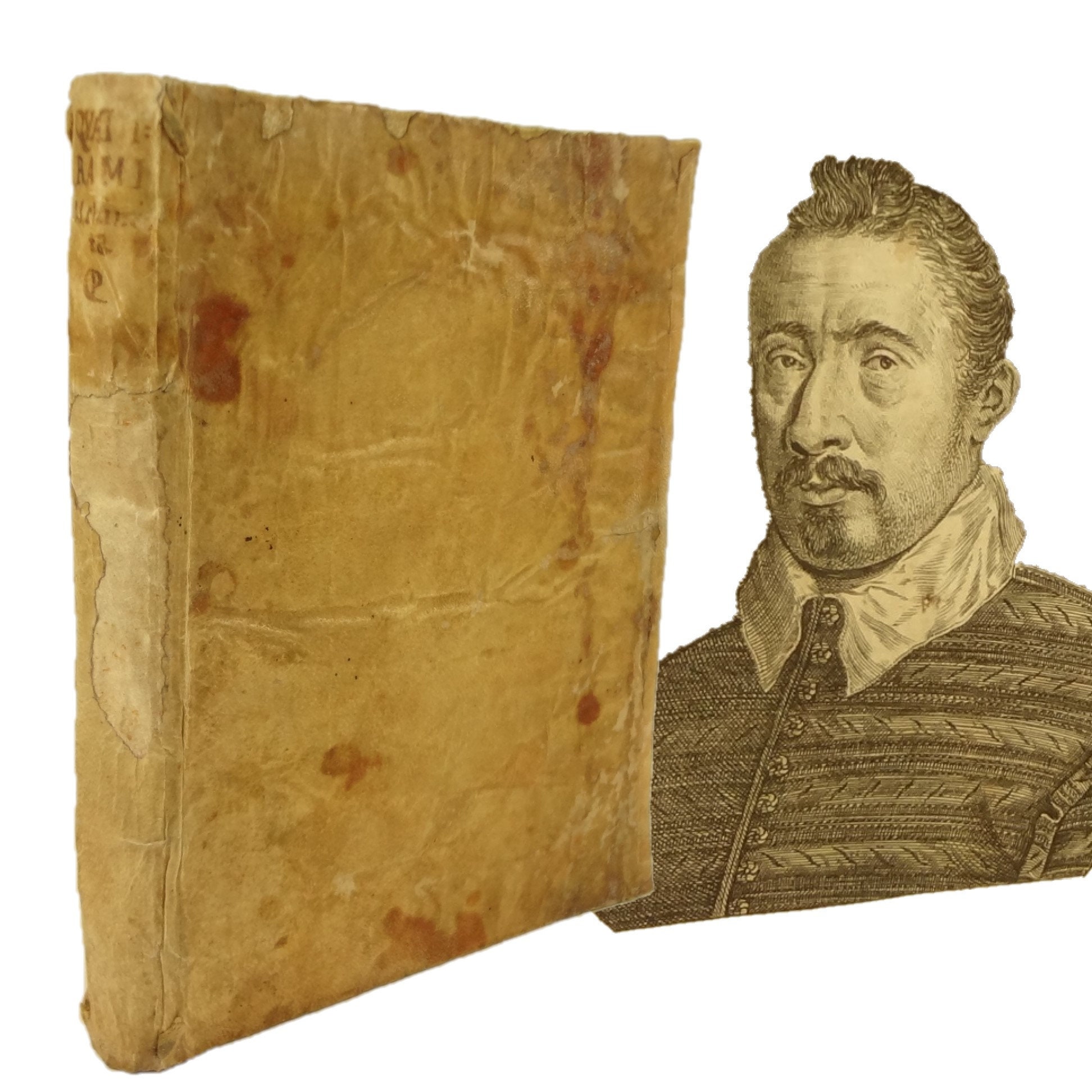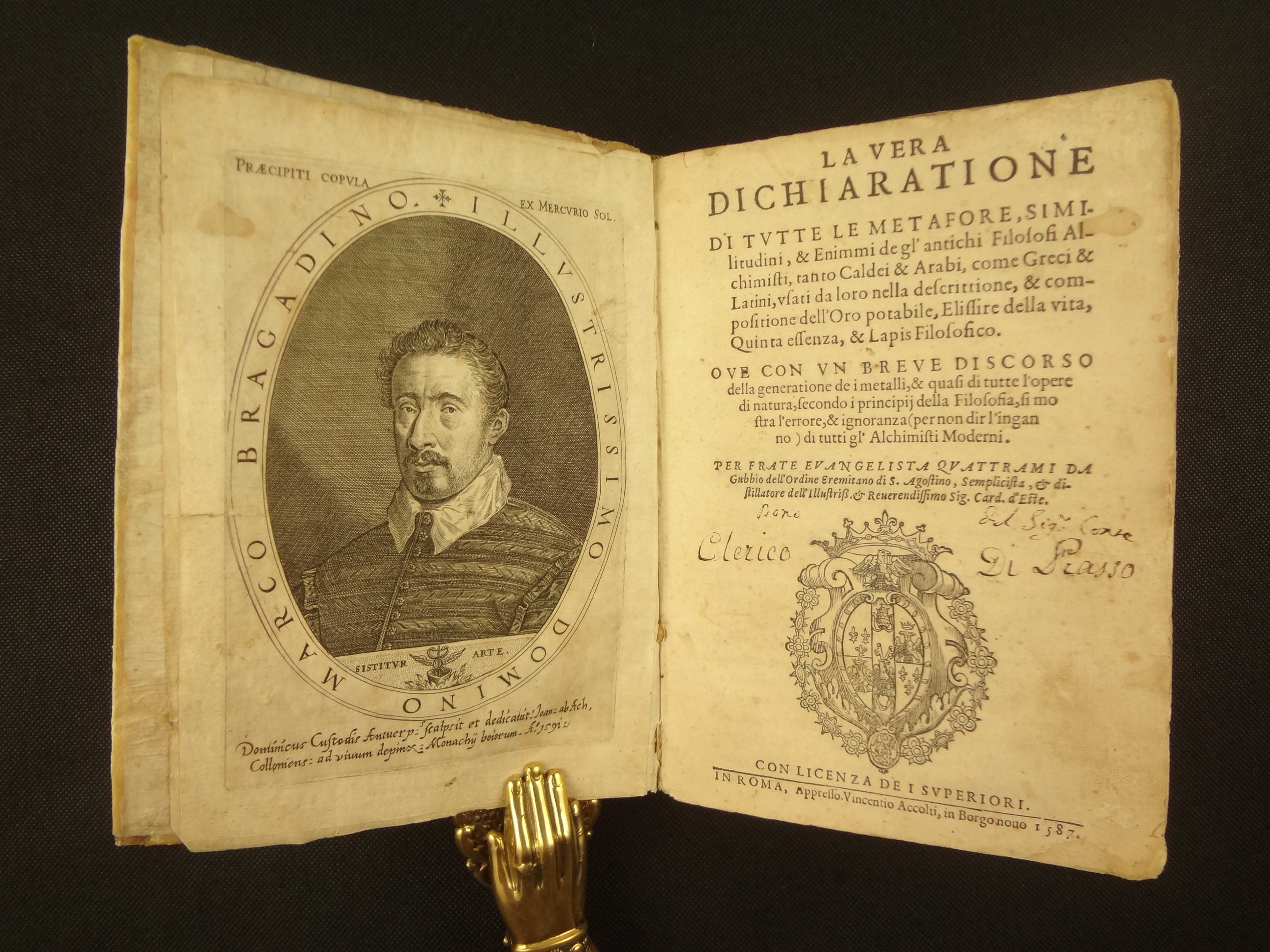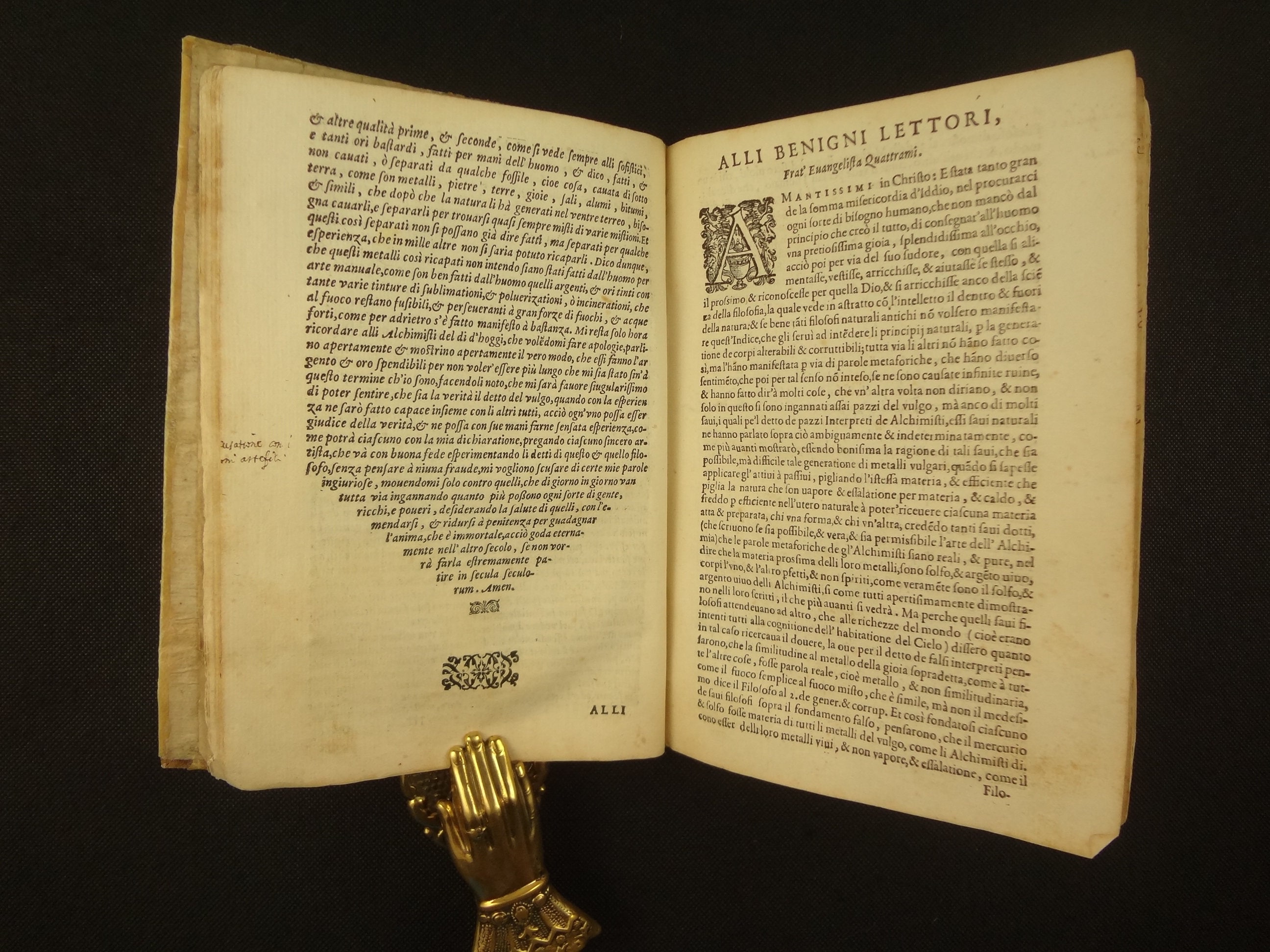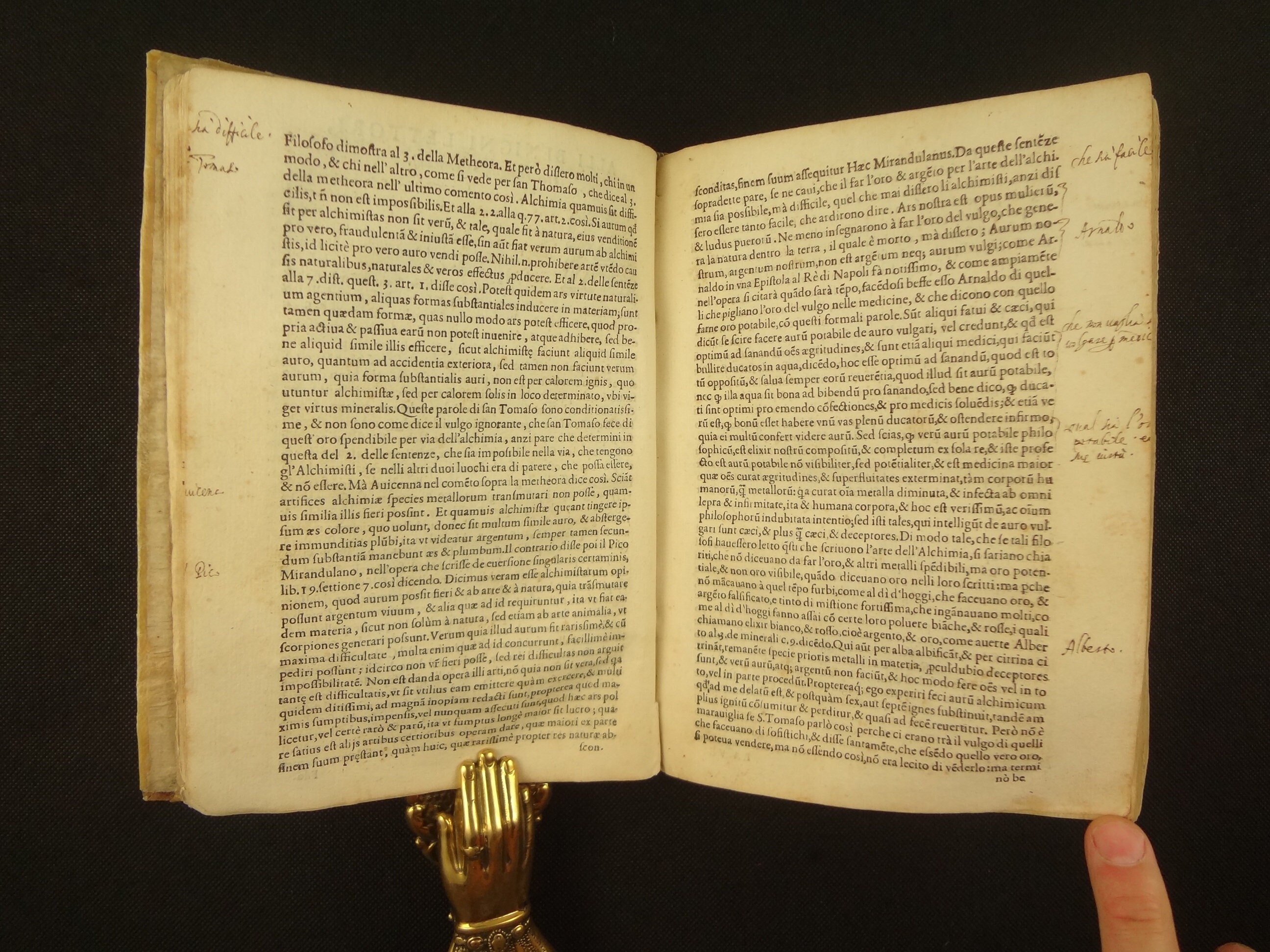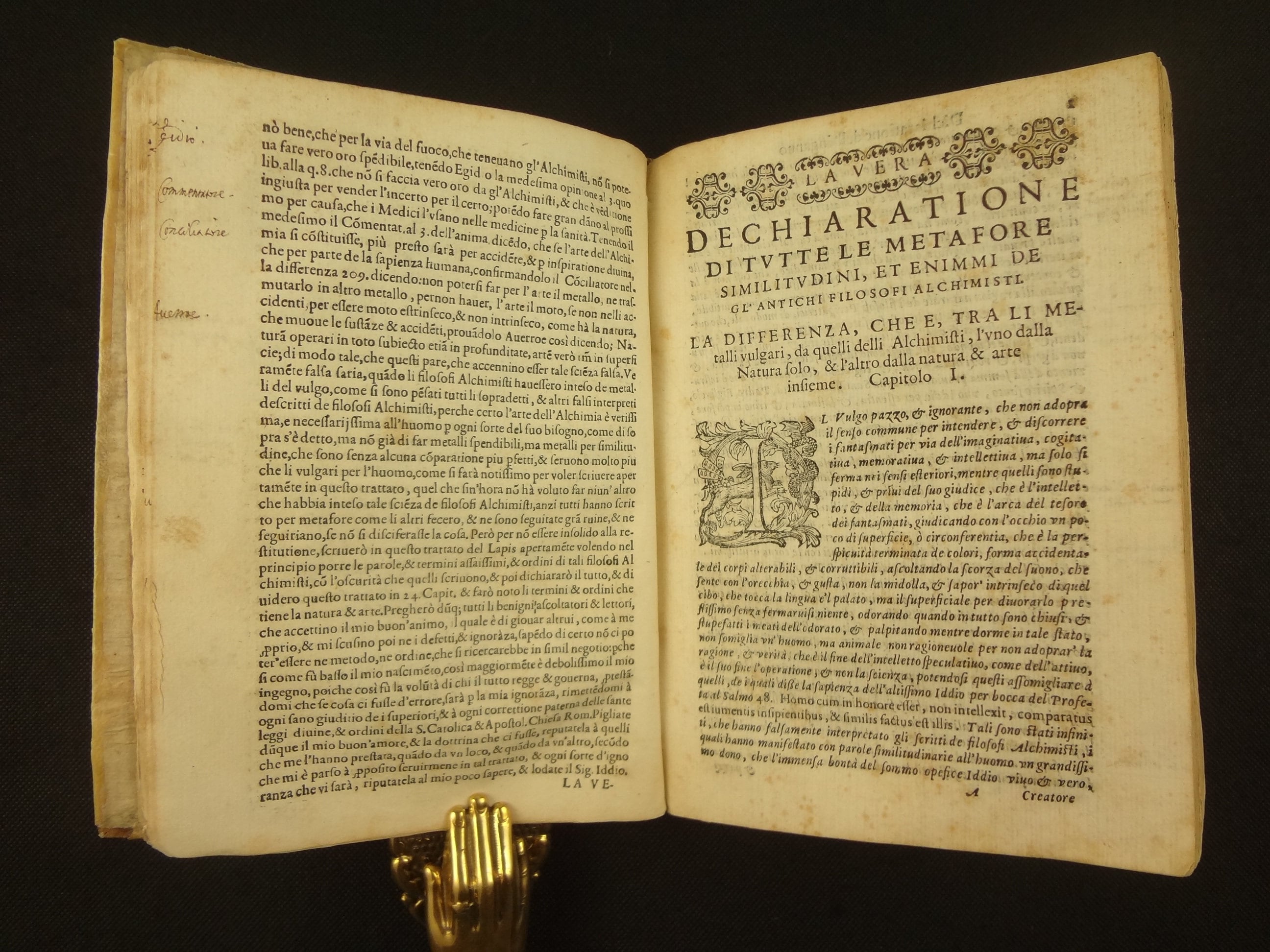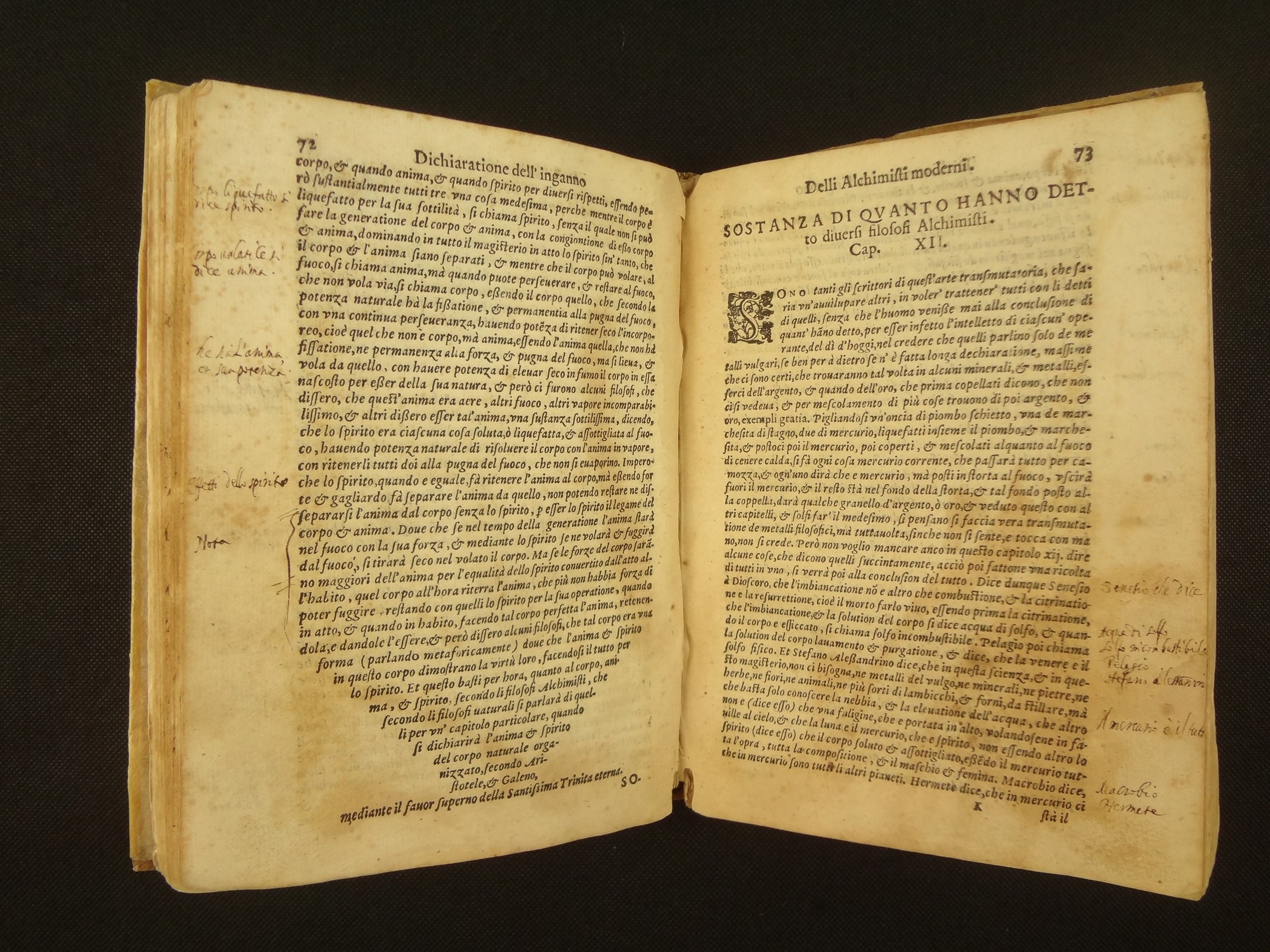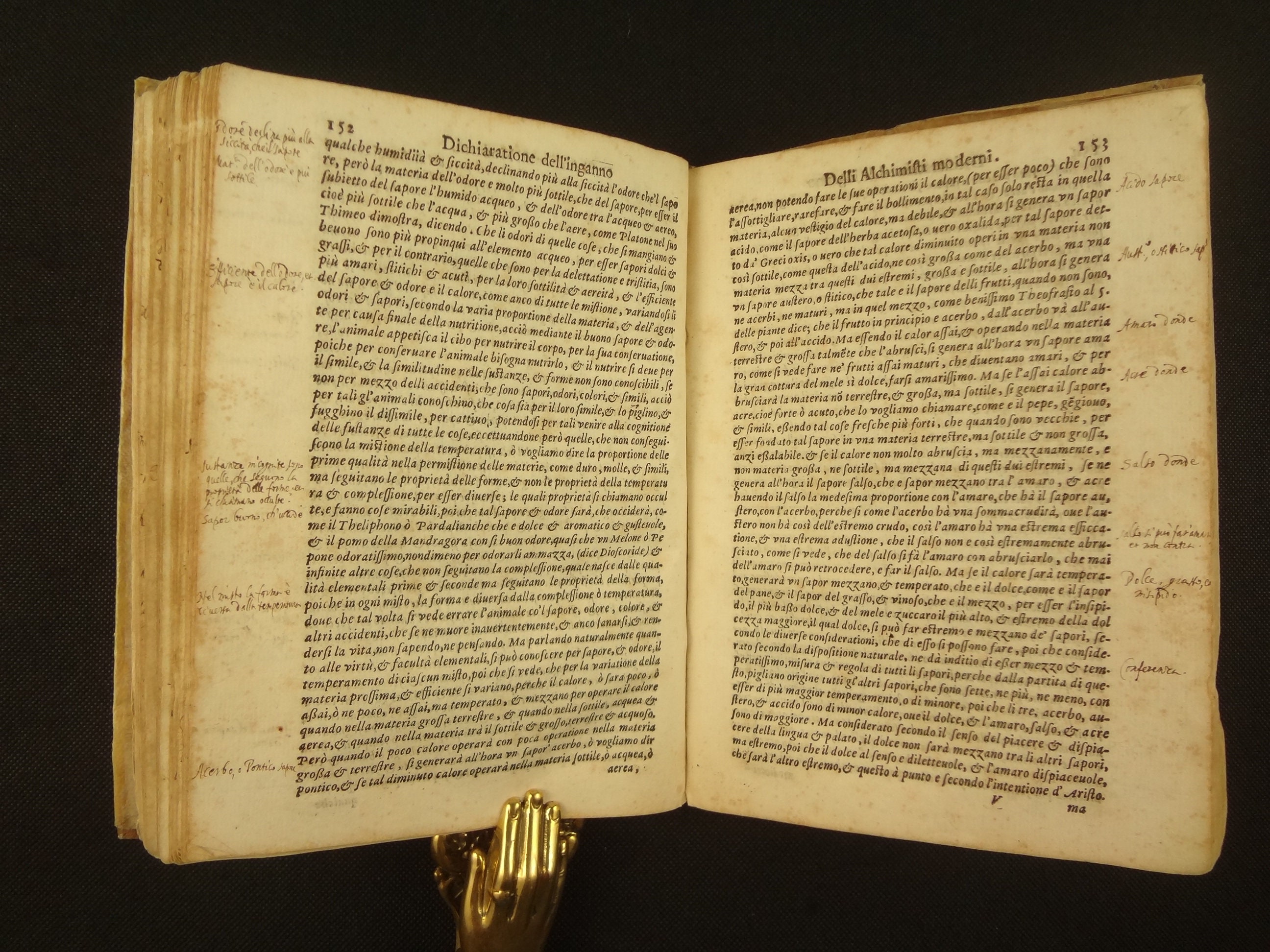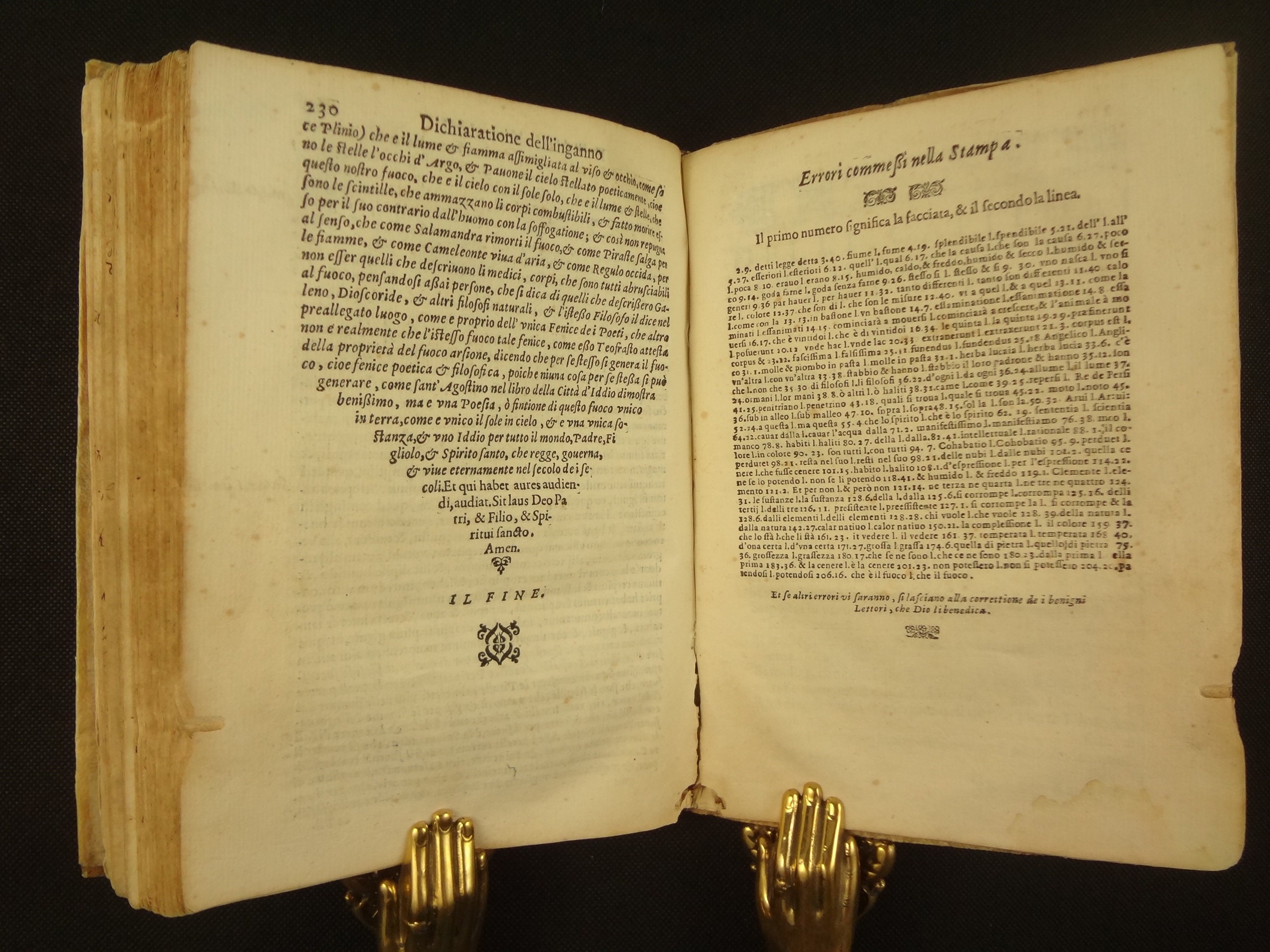Alchemy. 1587 La Vera Dichiaratione... by Evangelista Quattrami. Also with a 1591 Bragadino print pasted within.
$1,199.99
This first, and only, edition - 1587 printing of Evangelista Quattrami's La Vera Dichiaratione which exposed false alchemists, specifically those who claimed to produce gold from other elements.
Quattrami was an avowed alchemist, but his use of the "art" was geared towards medicine, science, etc.; Quattrami even discusses practical applications for fake gold, like affordable jewelry, but he does so with honesty.
In revealing the trade secrets of the alchemist, Quattrami exposes contemporary charlatans such as Marco Bragadino, who fooled his way into a position of importance in the courts of Venice, before his star quickly fell and he was executed by the Duke of Bavaria for fraud.
In Quattrami's introduction (not paginated; the first leaf of the gathering signed with three crosses) he describes a process of creating a false gold from gunpowder, mercury, gold colored liquid, wax and fire which creates a colored silver that resembles gold; this process is almost word-for-word the description onlookers gave of Bragadino's process for making gold.
The similarity between the author's description of charlatan gold, and the works of Bragadino, was not lost on a previous owner of this copy (perhaps even a contemporary of the alchemists); a 1591 print, for which The British Museum (reg. number Bb, 13.638) notes was "clearly made on the occasion of Bragadino's execution", is pasted to the free front endpaper. I'm unsure of the rarity of this 1591 portrait of Bragadino, but a cursory search for copies offered for sale, returned without results.
An Italian bookseller's description, loose within the book, states that on publication of this book, Bragadino's followers burned copies of this book, as well as other alchemists... but I find no historical reference to this reaction of the alchemists.
In fact, I can't find a single historical reference tying Bragadino and Quattrami; that's not to say that Quattrami's work didn't affect Bragadino's career (which blossomed, and fizzled out, just after the printing of this work), but I can't find official record of the association.
About the Author -
"The author, the Augustinian monk Evangelista Quattrami de Gubbio (1527-1602), was herbalist and distiller of the d'Este family for twenty years, first with Hippolyte d'Este, Cardinal of Ferrara, then with Cardinal Luigi d'Este and finally with Alfonso II (1533-1597), Duke of Ferrara. He obtained his doctorate in theology in Rome, where he stayed for a long time in the service of the two cardinals. In 1593 Quattrami joined Alfonso II in Ferrara where he was in charge of the ducal gardens and also prospected the surrounding mountains in search of new plants, a task that was common to all herbalists of the time. Quite extensive correspondence with Charles de l'Ecluse (Clusius) and especially with Odysseus Aldrovandi, to whom he sent plants, shows that he enjoyed a certain reputation at the time. Until 1597, the date of the death of Alfonso II, he was able to practice his profession profitably; but he no longer had the means to continue his work or even to support himself, and in 1601 he was definitively removed from the court of Ferrara. He returned to his convent in Gubbio where he probably died after March 31, 1602, the date of his last known letter." - Alchemie et Philosophie a la Renaissance, Perifano, p. 253
About Bragadino -
"Bragadino was Greek, originally from the island of Cyprus. He posed as the son of the governor of Venice, Count Marco Antonio Bragadino, who was captured and killed by the Turks in 1571. He went to Italy in 1578 under the name Count of Mamugnaro. Having succeeded in attracting the confidence of Martinego, he soon acquired a great reputation. He made transmutations in public, in order to prove that he owed the origin of his riches to the philosopher's stone. But his alleged processes for the preparation of this precious agent, which he sold at a very high price to his admirers, were for him a real source of fortune. This is how, finding himself in the palace of Nobile Cantarena, he made a transmutation of mercury into gold which amazed the assembly. His whole secret consisted in using an alloy of mercury and gold, because the assistants recognized that the compound which he placed in the reddened crucible, to be transformed into gold, lost half of its weight. Having been repeated in Venice in the house of the rich Dandolo, he amazed the nobility, and the Doge bought from him, at a very high price his philosopher's stone. The chemist Otto Tackenius, who was later commissioned to examine this powder, recognized that it consisted only of an amalgam of gold."
"Bragadino left Venice in 1588, and began to travel around Germany, taking the name Count Bragadino. The main cities of Germany witnessed his exploits. To produce a more vivid impression on the public's mind, he claimed to have the devil in his power. He carried out his operations always having at his side two enormous black mastiffs with a satanic look, which represented two demons chained to his power. Having acquired much reputation in Vienna through these maneuvers, Bragadino went to Munich. He arrived in Munich in 1590, and was immediately called to court to give testimony of his knowledge. But the frauds he employed having finally been discovered, he was put on trial and condemned to the gallows for having usurped a name that did not belong to him. Dressed in a golden habit, Bragadino was attached to the golden gallows of the alchemists. After his execution, the two black mastiffs, his companions, were killed under his gallows." - L'Alchimie et les Alchimistes, Figuier, p. 34, 1854
Full Title, roughly translated -
The true statement of all the metaphors, similes, & enigmas of the ancient alchemist philosophers, both Chaldean and Arab, as well as Greek and Latin, used by them in the description, and composition of drinkable gold, elixir of life, fifth essence, and philosophical pencil. Where with a brief discussion of the generation of metals, & almost all the works of nature, according to the principles of philosophy, the error & ignorance (not to say the deception) of all modern alchemists is shown. For Brother Evangelista Quattrami from Gubbio of the Hermit Order of Saint Augustine, simplist, and distiller of the most illustrious and most venerable Sig. Card. d'Este
Bibliographic Details -
Universal Short Title Catalogue number 851735; not rare.
Censimento Nazionale delle Edizioni Italiane del XVI secolo - reference 23331
OPAC SBN - BVEE006931
Physical Attributes -
Measures approx. 19.5 x 15 x 2 cm, quarto. Vellum binding. Printer's mark. Some initials, head and tailpieces, etc.
Pages - xxiv, 230, [26]
Collation : 1(cross)-3(cross)4, A-Z4, Aa-Ii4
Condition -
See pictures. Vellum binding, possibly contemporary, with some stains, cockling, ties expired, etc. The spine has a repair. Front hinge is entirely cracked, exposing the text-block at the gutter. 1591 portrait of Bragadino pasted to flyleaf.
Title page with "dono del Sig. Conte Clerico di Prasso" in an old hand. Throughout book pages are toned, with some fox spots, some moisture marks (mostly from bottom edge), chipping to page edges, thumbing, etc. Marginal annotations throughout (trimmed). A worm track from bottom edge right at gutter. Leaf 65/66 (I1) largely disconnected at gutter. Copious notes; someone pored over this book. Worm track at fore-edge for last four gatherings; no text affected. Worming at gutter from bottom edge has made bottom portion of pages free at rear of book.
Shipping from United States
Processing time
1-3 business days
Customs and import taxes
Buyers are responsible for any customs and import taxes that may apply. I'm not responsible for delays due to customs.
Payment Options
Returns & Exchanges
I gladly accept returns
Just contact me within: 7 days of delivery
Ship items back to me within: 14 days of delivery
I don't accept exchanges or cancellations
But please contact me if you have any problems with your order.
Conditions of return
Buyers are responsible for return shipping costs. If the item is not returned in its original condition, the buyer is responsible for any loss in value.
Privacy policy
We do not collect any private information. For billing, Etsy provides the service. We only receive notice that payment was made. The shipping address is provided to us by Etsy, based on what they buyer submitted during check-out. We do not store these addresses. That is the extent of the information that we receive during a transaction.
